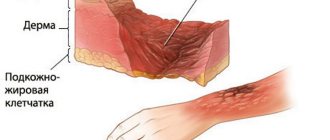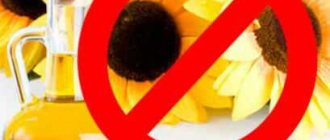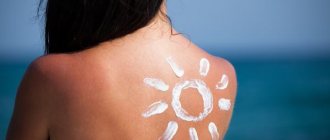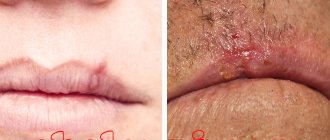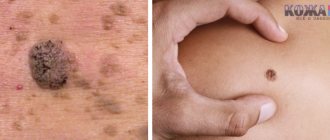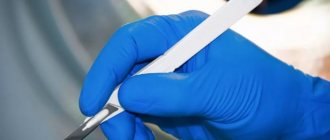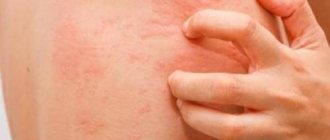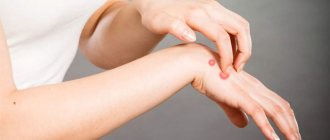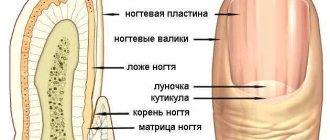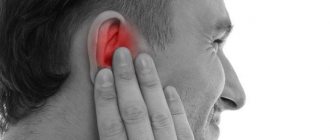A 3rd degree burn is a dangerous thermal injury. The injury affects not only the epidermis, but also the inner layers of the skin, and destruction of internal tissues is possible.
There are two types of 3rd degree burns: A and B.
The first option refers to superficial injuries, and the second to deeper ones. The visual difference between these types of burns is almost impossible to notice, since the difference is a few millimeters. When performing therapeutic measures, this difference is taken into account and affects the course and features of therapy.
Features of a third degree burn
Unlike other burns, 3rd degree injuries are always characterized by complete damage to all layers of the skin and the impossibility of its complete recovery on its own.
Such injuries often have a wide affected area, and, as a result, a large volume of dead tissue, which, when disintegrating, can provoke severe intoxication of the body .
The treatment process can take more than one month, and almost always requires some kind of surgical intervention. 3rd degree burns never disappear without a trace , leaving behind rough scars, stitches and other cosmetic defects.
Burn forms
Medicine defines two types of third-degree burns, differing primarily in the depth of the lesion. It is almost impossible to visually determine what type of burn this or that burn will be, since the difference can be determined by fractions of a millimeter.
But the approach to treatment and possible consequences may differ radically.
Burn 3A
Form 3A is considered less complex , and leaves the patient a chance for partial independent regeneration of damaged skin areas. With such burns, death of the epidermis and upper parts of the dermis occurs. Pain sensitivity remains.
The affected areas of the epidermis are separated from the body in flaps (often along with elements of clothing), exposing deeper layers of skin, which quickly change color from pink to dark red. At the site of the lesion, small dots of darker shades quickly begin to appear - multiple hemorrhages in the vessels.
Burn 3B
Refers to more complex injuries , affecting all layers of the skin and subcutaneous tissue. Such burns occur as a result of prolonged thermal exposure (boiling liquid, open fire, hot metal), or damage from concentrated alkalis and acids.
It is characterized by the appearance of a dry, dense scab and loss of pain and tactile sensitivity in the affected area. As it heals, it leads to the formation of dense, rough scars, and often requires surgical intervention.
Note! Local disturbances in the circulatory and metabolic systems lead to a significant (several degrees) decrease in temperature in the burn area. On this basis, a burn of form 3B is most often diagnosed.
Possible complications
The consequences of burn injuries can vary in severity and duration. The most common consequences of the pathology are :
- Infection of a burn wound. Occurs when the wound is contaminated during dressings, opening blisters and accidental penetration of dirt onto the wound;
- Poor circulation in the damaged area. This occurs with deep burns, in which massive scar changes occur in the thickness of the soft tissues;
- Sepsis is a general blood infection. Infection from the wound penetrates through the bloodstream into various organs, resulting in multiple organ failure;
- Colloidal scars. They occur at the site of deep burn wounds. They are painful, a pulling sensation occurs, and they disrupt the nutrition and trophism of nearby tissues. In addition, psychological discomfort arises due to a cosmetic defect.
Symptoms and signs
To treat a 3rd degree burn, it is necessary to determine the depth of the lesion as soon as possible . It is not possible to do this at home, since it requires the use of specialized medical instruments.
The symptoms of burns of types 3A and 3B are slightly different.
Signs of 3A burns
- Severe pain , especially in the first few hours after the burn.
- A large number of hemorrhages at the burn site, manifested in the form of red dots or stripes.
- The surface of the skin in the affected area is embossed, with a bright red or burgundy tint.
- There may be fluid-filled blisters on the skin.
Signs of 3B degree burns
- During the first 20-30 minutes after the injury, the victim may not feel pain .
- Blood pressure can reach very low values (even in hypertensive patients), presenting a certain danger to the patient’s life.
- that appear on the skin quickly burst, forming a dry crust .
Causes of spots
Most often, formations on the skin occur due to pathologies of internal organs or dermatological diseases. Sometimes their appearance is influenced by external factors, and when eliminated, the spots disappear without treatment.
Common reasons include the following:
- pathologies of the liver and other organs of the gastrointestinal tract;
- consequences of severe stress or prolonged depression;
- disturbances in the hormonal system, endocrine diseases;
- severe hypothermia or, conversely, overheating of the body;
- a red spot on the hand that looks like a burn indicates an allergic reaction. This could be the body's response to food, synthetic clothing, household chemicals, pet hair, or plant blooms.
Papules often appear during infections. But the rash is accompanied by other symptoms: high body temperature, poor health, sore throat, runny nose. Common infectious diseases include rubella, scarlet fever, chickenpox, and scabies.
If any formations appear, you should seek help from a doctor, even if the spot does not manifest itself in any way, there is no itching, peeling or pain.
First aid to the victim
Any severe burns should be treated in a hospital setting. However, until the ambulance arrives, the patient will need to be given all possible assistance:
- First of all, it is necessary to eliminate the damaging factor .
- You can apply sterile bandages or napkins to the damaged areas . Cotton wool should not be used, as its fibers will stick to a wet wound and cause severe pain when removed.
- If possible, the affected area of the body raised up to slow down the spread of toxic decay products from the wound throughout the body.
It is prohibited to do
Photo 2. Providing first aid for severe burns is best left to professionals. Source: Flickr (Photo of Moscow).
- No matter how much one would like to alleviate the patient’s suffering as much as possible, giving him painkillers before the doctors arrive is not allowed. This can make it very difficult to make a correct diagnosis. In addition, home medicine cabinets most likely simply will not contain the necessary medications, since very strong narcotics like morphine or promedol are often used to relieve burn shock.
- Do not wash burn wounds with antiseptics or any other liquids. It is better to leave the wounds untouched until the ambulance arrives.
- Cooling damaged areas (especially with ice) is also prohibited.
Classification by type of damage
4th degree burns are divided into three types:
- thermal;
- electrical;
- chemical.
A thermal burn, which occurs with prolonged exposure to high-temperature agents, leads to necrosis of the affected area of the skin. Necrosis extends not only to the skin, but also to deeper structures, muscles, bones, tendons. In rare cases, a thermal burn results in charring.
The number of 4th degree chemical burns does not exceed 1% of common injuries of this type. Skin of a large area exposed to chemical burns leads to the appearance of ulcerative, long-term non-healing wounds. In this case, the skin requires surgical treatment.
Electrical burns of the 4th degree, which occur from high voltage injuries, are fatal in most cases. Such injuries most often occur in manufacturing plants. As a rule, electrical burns are combined with thermal burns, which in turn are formed from contact with hot objects and burning clothing. Electrical voltage instantly causes shock and affects all human organs simultaneously, which can subsequently lead to paralysis of the respiratory tract or cardiac arrest, which subsequently causes clinical death. The only way to survive a 4th degree electrical burn is only with timely resuscitation.
Treatment
Treatment of burns of types 3A and 3B must be carried out in a hospital (burn department of a hospital or specialized center). Therapeutic measures are a set of procedures aimed at:
- Relieving pain syndrome.
- Prevention of anemia and hypoxia.
- Normalization of metabolism.
- Elimination of intoxication of the body.
- Preventing disruptions in the functioning of the cardiovascular system.
Conservative treatment
The attending physician begins with pain relief , while simultaneously treating the damaged areas of the skin, assessing their condition, and deciding on further treatment tactics.
Closed method
Damaged areas are constantly covered with bandages, which minimizes the risk of infection and mechanical damage, but, at the same time, increases intoxication from the decomposition of dying tissue. In addition, frequent dressings will inevitably cause a lot of inconvenience to the patient.
Note! Popular antiseptics are most often used as medications for dressings: furatsilin, silver nitrate, ethacridine lactate.
In addition to antiseptics, treatment of burned surfaces with ultraviolet or infrared radiation . This helps to minimize the risk of wet necrosis and eliminate purulent formations.
Open way
With the open method of therapy, a dry crust forms over the burn site , and monitoring the healing process is greatly simplified. Among the disadvantages, one can note the constant evaporation of moisture from injured areas.
The use of ointments for type 3 burns is not prescribed immediately, but only when the process of exudation (the release of ichor from small blood vessels) in the wound is completed. The most commonly used external preparations are:
- Levomekol.
- Gentamicin ointment.
- Syntomycin.
- Furacilin ointment.
Antibiotics are rarely prescribed for the treatment of such burns. Their use is justified if the total area of burns exceeds 10% of the victim’s skin. The drugs are administered intramuscularly, and only in the most difficult cases – intravenously. If the course of the disease is complicated by the addition of a fungal infection, appropriate medications (Diflucan, Levorin, etc.) may be additionally prescribed.
Surgery
A 3rd degree burn is a very complex type of injury, almost always requiring surgical intervention . The nature of such intervention is determined individually, and largely depends on the severity of the injury. Often patients undergo surgery on the first day after receiving a burn.
Necrotomy
This intervention involves cutting through dead layers of skin , the so-called burn scab. The wound is opened up to the viable layers and is aimed, first of all, at the unhindered outflow of fluid from the site of injury.
Necrectomy
The next stage of surgical treatment of the wound, which involves excision and removal of necrotic areas of skin . It is performed 5-7 days after receiving a burn, when the boundaries of necrosis are clearly marked.
Amputation
The most undesirable outcome for the patient is when the damage to the skin is so severe that it leaves doctors no choice other than complete surgical removal of the affected limb (or part thereof).
Skin transplantation
The most common operation for people who have suffered a 3rd degree burn remains skin grafting. The intervention involves the sequential implementation of several stages:
- Removal of donor material. Often, for these purposes, skin areas taken from healthy areas of the patient are used.
- Preliminary surface preparation, including cleaning, washing with special solutions and drying.
- Grafting a piece of skin onto a wound.
The grafts are fixed in a new place using sutures or bandages and can take root in a new place in about a week .
Physiotherapeutic treatment
Various physiotherapeutic procedures can be an excellent addition to the main treatment , helping to stop the development of dangerous inflammatory processes, relieve pain and accelerate the rate of regeneration of damaged skin areas.
In the phase of active tissue restoration, the following are used:
- Ultraviolet therapy (up to 12 sessions per day).
- Low-frequency magnetic therapy (daily for 35 minutes, course of treatment – 15 days).
- Laser exposure (daily sessions lasting 20 minutes are prescribed for 20 days).
- Electrical stimulation (at least 15 sessions).
At later stages, when scar tissue is actively forming, you can practice paraffin baths, ultraphonophoresis or electrophoresis with lidase.
How to reduce
To reduce elevated body temperature after a burn, it is necessary to give the victim antipyretic tablets or give an intramuscular injection. It is important for the patient to drink plenty of water to restore water balance in the body and prevent dehydration, which also causes fever. Patients are given dressings, wounds are treated and painkillers are prescribed.
The burned area should not be lubricated with fat or oil immediately after injury. This will lead to the formation of a film that prevents heat loss.
Common medications used to reduce fever and relieve pain are:
- Ibuprofen;
- Paracetamol;
- Tempalgin;
- Pentalgin.
Elimination of pain allows you to reduce the inflammatory process and restore normal body temperature. By following all the recommendations of your doctor, you can improve your condition and prevent the occurrence of scars or other marks of the injury.
Rehabilitation period
The rehabilitation period involves the implementation of a whole range of measures aimed at speedy healing of burns and the patient’s return to normal life. During this period, the victim’s body may still experience some disorders:
- Difficulty breathing, shortness of breath.
- Kidney failure.
- Metabolic disorders.
- Gastrointestinal disorders (most often – poor appetite, constipation).
- Disorders of the cardiovascular system.
Prevention of burns
No one can completely insure themselves against burns, but every person can significantly reduce the likelihood of getting them. You just need to listen to the recommendations of experts:
- Be careful when preparing food.
- If possible, place pots with boiling water on the stove burners farthest from the edge.
- Protect children from access to open flames.
- Avoid having exposed electrical wiring or loose sockets and switches in your home.
- Hazardous chemical liquids must be stored in a protected area and clearly labeled.
- Buy a fire extinguisher for your home or apartment .
